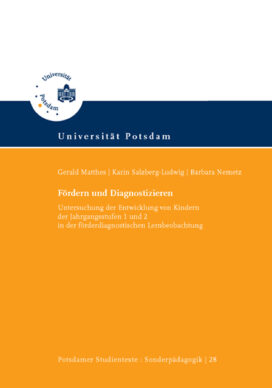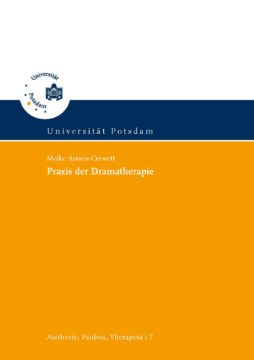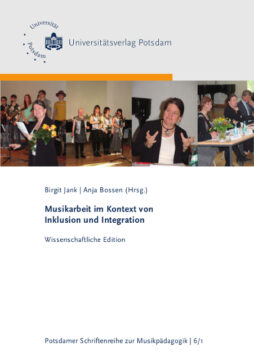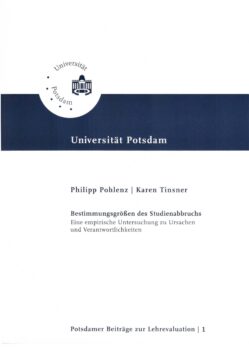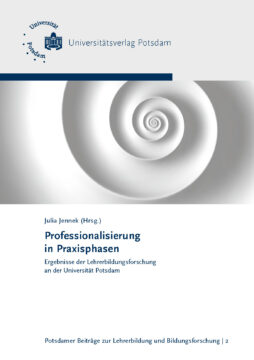The investigation deals with the difficulty of linking diagnostics and special education help (and to look on it as a unity). This problem must be solved to identify the type of learning impairment and offer special educational services. For this purpose the authors develop and test a programme which lasts several months. The child stays in his or her primary school class. So he or she will get special help and will be supported by the class teacher and the special education teacher, who are closely working together. The application of the strategy was tested with 28 schoolchildren, who have problems and impairments in learning, in their language and in their emotional and social development. The study is based on controlled qualitative and quantitative individual cases in which the mental, physical and learning development is analyzed. Using this strategy, the complexity and individuality of the development as well as special education needs of every child could be shown. With the help of a meta-analysis, the authors found out general and relevant factors for a diagnosis, an individualized education plan and special educational services. From these factors, a model for diagnose and special education needs was derived.
Barbara Nemetz, Karin Salzberg-Ludwig, Gerald Matthes
Untersuchung der Entwicklung von Kindern der Jahrgangsstufen 1 und 2 in der förderdiagnostischen Lernbeobachtung
ISBN: 978-3-940793-64-5
155 pages
Release year 2009
Series: Potsdamer Studientexte: Sonderpädagogik , 28
12,00 €
Non-taxable transaction according to § 1 (1) UStG/VAT Act in combination with § 2 (3) UStG/VAT Act a. F. Providing this service, the University of Potsdam does not constitute a Betrieb gewerblicher Art/Commercial Institution according to § 1 (1) No. 6 or § 4 KStG/Corporate Tax Act. If the legal characterization of our business is changed to a commercial institution subsequently, we reserve the right to invoice VAT additionally. zzgl. Versandkosten
The investigation deals with the difficulty of linking diagnostics and special education help (and to look on it as a unity). This problem must be solved to identify the type of learning impairment and offer special educational services. For this purpose the authors develop and test a programme which lasts several months. The child stays in his or her primary school class. So he or she will get special help and will be supported by the class teacher and the special education teacher, who are closely working together. The application of the strategy was tested with 28 schoolchildren, who have problems and impairments in learning, in their language and in their emotional and social development. The study is based on controlled qualitative and quantitative individual cases in which the mental, physical and learning development is analyzed. Using this strategy, the complexity and individuality of the development as well as special education needs of every child could be shown. With the help of a meta-analysis, the authors found out general and relevant factors for a diagnosis, an individualized education plan and special educational services. From these factors, a model for diagnose and special education needs was derived.
Recommended Books
-
 2000
2000Praxis der Dramatherapie
6,00 €Non-taxable transaction according to § 1 (1) UStG/VAT Act in combination with § 2 (3) UStG/VAT Act a. F. Providing this service, the University of Potsdam does not constitute a Betrieb gewerblicher Art/Commercial Institution according to § 1 (1) No. 6 or § 4 KStG/Corporate Tax Act. If the legal characterization of our business is changed to a commercial institution subsequently, we reserve the right to invoice VAT additionally.
zzgl. Versandkosten
Add to cart -
 2017
2017Jank, Birgit; Bossen, Anja (Hrsg.)
Musikarbeit im Kontext von Inklusion und Integration
11,50 €Non-taxable transaction according to § 1 (1) UStG/VAT Act in combination with § 2 (3) UStG/VAT Act a. F. Providing this service, the University of Potsdam does not constitute a Betrieb gewerblicher Art/Commercial Institution according to § 1 (1) No. 6 or § 4 KStG/Corporate Tax Act. If the legal characterization of our business is changed to a commercial institution subsequently, we reserve the right to invoice VAT additionally.
zzgl. Versandkosten
Add to cart -
 2004
2004Philipp Pohlenz, Karen Tinsner
Bestimmungsgrößen des Studienabbruchs
7,00 €Non-taxable transaction according to § 1 (1) UStG/VAT Act in combination with § 2 (3) UStG/VAT Act a. F. Providing this service, the University of Potsdam does not constitute a Betrieb gewerblicher Art/Commercial Institution according to § 1 (1) No. 6 or § 4 KStG/Corporate Tax Act. If the legal characterization of our business is changed to a commercial institution subsequently, we reserve the right to invoice VAT additionally.
zzgl. Versandkosten
Add to cart -
 2022
2022Julia Jennek, Stefanie Rother, Frank Tosch, Mirko Wendland, Steffen Kludt, Karsten Krauskopf, Dorothea Kitschke, Verena Maar, Michel Knigge, Susanne Gnädig, Astrid Seidel, Karl-Heinz Siehr, Maik Wienecke, Claudia-Susanne Günther, Karen Reitz-Koncebovski, Peter M. Klöpping, Denise Kücholl, Rebecca Lazarides, Andrea Westphal, Frederik Ahlgrimm, Anahit Barseghyan, Ingrid Glowinski, Anna Gronostaj, Dorothea Körner, Linda Kuhr, Jörg-Werner Link, Lynn Scherreiks, Miriam Vock, Jürgen Wilbert, Nicole Zaruba
Professionalisierung in Praxisphasen
19,50 €Non-taxable transaction according to § 1 (1) UStG/VAT Act in combination with § 2 (3) UStG/VAT Act a. F. Providing this service, the University of Potsdam does not constitute a Betrieb gewerblicher Art/Commercial Institution according to § 1 (1) No. 6 or § 4 KStG/Corporate Tax Act. If the legal characterization of our business is changed to a commercial institution subsequently, we reserve the right to invoice VAT additionally.
zzgl. Versandkosten
Add to cart
Publisher Info
Contact
Potsdam University Library
University Press
Am Neuen Palais 10
14476 Potsdam
Germany
verlag@uni-potsdam.de
0331 977-2094
0331 977-2292

